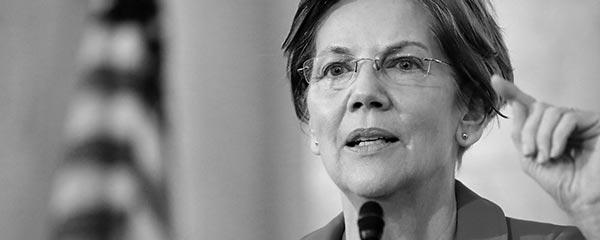Story Highlights
- 49% of investors expect market to be higher at end of 2019
- 28% predict stock prices will be same as today, 23% say they will be lower
- Six in 10 investors concerned market is peaking
WASHINGTON, D.C. -- Half of U.S. investors, 49%, were bullish on the stock market in the second quarter, saying they expected average stock prices to be higher by the end of 2019. At the same time, 23% were distinctly bearish, expecting prices to be lower at year's end while another 28% predicted they will be the same.
| Total higher | The same | Total lower | Net bullish | |||||||||||||||||||||||||||||||||||||||||||||||||||||||||||||||||||||||||||||||||||||||||||||||||
|---|---|---|---|---|---|---|---|---|---|---|---|---|---|---|---|---|---|---|---|---|---|---|---|---|---|---|---|---|---|---|---|---|---|---|---|---|---|---|---|---|---|---|---|---|---|---|---|---|---|---|---|---|---|---|---|---|---|---|---|---|---|---|---|---|---|---|---|---|---|---|---|---|---|---|---|---|---|---|---|---|---|---|---|---|---|---|---|---|---|---|---|---|---|---|---|---|---|---|---|---|
| % | % | % | pct. pts | |||||||||||||||||||||||||||||||||||||||||||||||||||||||||||||||||||||||||||||||||||||||||||||||||
| U.S. investors | 49 | 28 | 23 | 26 | ||||||||||||||||||||||||||||||||||||||||||||||||||||||||||||||||||||||||||||||||||||||||||||||||
| Retirement status | ||||||||||||||||||||||||||||||||||||||||||||||||||||||||||||||||||||||||||||||||||||||||||||||||||||
| Retired | 49 | 33 | 18 | 31 | ||||||||||||||||||||||||||||||||||||||||||||||||||||||||||||||||||||||||||||||||||||||||||||||||
| Not retired | 50 | 26 | 25 | 25 | ||||||||||||||||||||||||||||||||||||||||||||||||||||||||||||||||||||||||||||||||||||||||||||||||
| Gender | ||||||||||||||||||||||||||||||||||||||||||||||||||||||||||||||||||||||||||||||||||||||||||||||||||||
| Male | 57 | 20 | 23 | 35 | ||||||||||||||||||||||||||||||||||||||||||||||||||||||||||||||||||||||||||||||||||||||||||||||||
| Female | 41 | 36 | 23 | 18 | ||||||||||||||||||||||||||||||||||||||||||||||||||||||||||||||||||||||||||||||||||||||||||||||||
| Age | ||||||||||||||||||||||||||||||||||||||||||||||||||||||||||||||||||||||||||||||||||||||||||||||||||||
| 18 to 49 | 46 | 27 | 26 | 20 | ||||||||||||||||||||||||||||||||||||||||||||||||||||||||||||||||||||||||||||||||||||||||||||||||
| 50 to 64 | 57 | 23 | 20 | 37 | ||||||||||||||||||||||||||||||||||||||||||||||||||||||||||||||||||||||||||||||||||||||||||||||||
| 65 and older | 45 | 35 | 20 | 25 | ||||||||||||||||||||||||||||||||||||||||||||||||||||||||||||||||||||||||||||||||||||||||||||||||
| Amount invested | ||||||||||||||||||||||||||||||||||||||||||||||||||||||||||||||||||||||||||||||||||||||||||||||||||||
| $100,000+ | 54 | 26 | 20 | 34 | ||||||||||||||||||||||||||||||||||||||||||||||||||||||||||||||||||||||||||||||||||||||||||||||||
| Less than $100,000 | 46 | 28 | 26 | 20 | ||||||||||||||||||||||||||||||||||||||||||||||||||||||||||||||||||||||||||||||||||||||||||||||||
| Party ID | ||||||||||||||||||||||||||||||||||||||||||||||||||||||||||||||||||||||||||||||||||||||||||||||||||||
| Republican | 78 | 18 | 4 | 74 | ||||||||||||||||||||||||||||||||||||||||||||||||||||||||||||||||||||||||||||||||||||||||||||||||
| Independent | 47 | 26 | 27 | 20 | ||||||||||||||||||||||||||||||||||||||||||||||||||||||||||||||||||||||||||||||||||||||||||||||||
| Democrat | 29 | 37 | 33 | -4 | ||||||||||||||||||||||||||||||||||||||||||||||||||||||||||||||||||||||||||||||||||||||||||||||||
| Net bullish= % total higher minus % total lower | ||||||||||||||||||||||||||||||||||||||||||||||||||||||||||||||||||||||||||||||||||||||||||||||||||||
| Wells Fargo/Â鶹´«Ã½AV, May 6-12, 2019 | ||||||||||||||||||||||||||||||||||||||||||||||||||||||||||||||||||||||||||||||||||||||||||||||||||||
Most subgroups of investors are moderately more positive than negative about the direction of the market. One exception is partisan groups, as Republicans overwhelmingly expect stock prices to increase (78%) while Democrats are slightly more likely to predict a decline than an increase (33% vs. 29%).
Other slight differences in investors' outlook for the market in 2019 are likely related to these party differences. In particular, men, investors with more than $100,000 invested and retirees -- all of whom tilt more Republican than their counterparts -- are more likely than women, lower asset investors and non-retirees to expect the market to increase.
These findings are based on the Wells Fargo/Â鶹´«Ã½AV Investor and Retirement Optimism Index second quarter survey, conducted by web May 6-12 using the Â鶹´«Ã½AV Panel. Investors for this survey are defined as adults with $10,000 or more invested in stocks, bonds or mutual funds, either within or outside a retirement savings account.
Four in 10 Investors Experiencing Wealth Effect
At the time of the poll, the stock market was doing well, with the Dow Jones Industrial Average holding steady at just under 26,000 throughout the seven-day field period. Survey respondents were asked to say how the market's current performance was making them feel on four different dimensions.
Sixty-one percent of investors said the market's performance made them concerned the market was peaking and poised to drop. At the same time, 53% said it made them feel more confident about their own retirement savings.
While not majorities, large segments of investors also said the market's performance was making them feel more comfortable about spending money (44%) and about their ability to make major purchases in the next year (40%). This so-called wealth effect may be reflected in the government's latest report on consumer spending, showing increases in purchases on motor vehicles, restaurants and hotel accommodations. Despite this, the increase in overall spending reported by the Commerce Department was fairly muted.
| Concerned market is peaking | More confident in retirement savings | More comfortable spending money | More confident making major purchases | |||||||||||||||||||||||||||||||||||||||||||||||||||||||||||||||||||||||||||||||||||||||||||||||||
|---|---|---|---|---|---|---|---|---|---|---|---|---|---|---|---|---|---|---|---|---|---|---|---|---|---|---|---|---|---|---|---|---|---|---|---|---|---|---|---|---|---|---|---|---|---|---|---|---|---|---|---|---|---|---|---|---|---|---|---|---|---|---|---|---|---|---|---|---|---|---|---|---|---|---|---|---|---|---|---|---|---|---|---|---|---|---|---|---|---|---|---|---|---|---|---|---|---|---|---|---|
| % | % | % | % | |||||||||||||||||||||||||||||||||||||||||||||||||||||||||||||||||||||||||||||||||||||||||||||||||
| U.S. investors | 61 | 53 | 44 | 40 | ||||||||||||||||||||||||||||||||||||||||||||||||||||||||||||||||||||||||||||||||||||||||||||||||
| Retirement status | ||||||||||||||||||||||||||||||||||||||||||||||||||||||||||||||||||||||||||||||||||||||||||||||||||||
| Retired | 54 | 62 | 58 | 55 | ||||||||||||||||||||||||||||||||||||||||||||||||||||||||||||||||||||||||||||||||||||||||||||||||
| Not retired | 64 | 50 | 38 | 33 | ||||||||||||||||||||||||||||||||||||||||||||||||||||||||||||||||||||||||||||||||||||||||||||||||
| Gender | ||||||||||||||||||||||||||||||||||||||||||||||||||||||||||||||||||||||||||||||||||||||||||||||||||||
| Male | 57 | 60 | 51 | 46 | ||||||||||||||||||||||||||||||||||||||||||||||||||||||||||||||||||||||||||||||||||||||||||||||||
| Female | 65 | 46 | 37 | 33 | ||||||||||||||||||||||||||||||||||||||||||||||||||||||||||||||||||||||||||||||||||||||||||||||||
| Age | ||||||||||||||||||||||||||||||||||||||||||||||||||||||||||||||||||||||||||||||||||||||||||||||||||||
| 18 to 49 | 66 | 45 | 33 | 27 | ||||||||||||||||||||||||||||||||||||||||||||||||||||||||||||||||||||||||||||||||||||||||||||||||
| 50 to 64 | 55 | 58 | 51 | 47 | ||||||||||||||||||||||||||||||||||||||||||||||||||||||||||||||||||||||||||||||||||||||||||||||||
| 65 and older | 60 | 61 | 55 | 51 | ||||||||||||||||||||||||||||||||||||||||||||||||||||||||||||||||||||||||||||||||||||||||||||||||
| Amount invested | ||||||||||||||||||||||||||||||||||||||||||||||||||||||||||||||||||||||||||||||||||||||||||||||||||||
| $100,000+ | 63 | 57 | 46 | 40 | ||||||||||||||||||||||||||||||||||||||||||||||||||||||||||||||||||||||||||||||||||||||||||||||||
| Less than $100,000 | 60 | 49 | 37 | 36 | ||||||||||||||||||||||||||||||||||||||||||||||||||||||||||||||||||||||||||||||||||||||||||||||||
| Party ID | ||||||||||||||||||||||||||||||||||||||||||||||||||||||||||||||||||||||||||||||||||||||||||||||||||||
| Republican | 28 | 87 | 79 | 73 | ||||||||||||||||||||||||||||||||||||||||||||||||||||||||||||||||||||||||||||||||||||||||||||||||
| Independent | 66 | 43 | 37 | 31 | ||||||||||||||||||||||||||||||||||||||||||||||||||||||||||||||||||||||||||||||||||||||||||||||||
| Democrat | 82 | 38 | 23 | 22 | ||||||||||||||||||||||||||||||||||||||||||||||||||||||||||||||||||||||||||||||||||||||||||||||||
| Wells Fargo/Â鶹´«Ã½AV, May 6-12, 2019 | ||||||||||||||||||||||||||||||||||||||||||||||||||||||||||||||||||||||||||||||||||||||||||||||||||||
There are a few notable distinctions in these findings among subgroups of investors:
- Non-retired investors are only slightly more likely than retired investors to say the market is peaking; however, they are much less likely to say the market's performance enhances their confidence in spending money or making major purchases.
- Women are less likely than men to say the market makes them more comfortable about spending money or making major purchases.
- Investors under age 50 are less likely than those 50 to 64 and 65+ to say the market makes them feel more confident in their retirement savings or about spending.
- There is no difference by investment class in the perception the market is peaking, but lower asset investors are slightly less likely to say the market makes them feel more confident about their retirement savings or about spending money today.
- Market-driven emotions are highly related to partisanship with most Republicans rejecting the idea that the market is peaking and feeling more confident about their savings and spending. Most Democrats predict the market is peaking and few say the market performance makes them feel confident about their finances.
Bottom Line
With the stock market back near record-high levels after a down year in 2018, investors are showing signs of concern. Half believe the market will continue to deliver gains in the second half of 2019, but the other half predicts the market will flat-line or retreat, neither of which is good for portfolios.
Still, green stock tickers make the slight majority of investors, particularly retirees, feel more confident about their retirement security. Such confidence can have dividends for the economy if healthy portfolios cause investors to boost their spending -- a phenomenon known as the wealth effect. About four in 10 investors, fueled mostly by Republicans, report feeling this way. One reason this isn't reflected in stronger overall consumer spending could be that Republicans' exuberance about the stock market is offset by Democrats' heavy skepticism.




